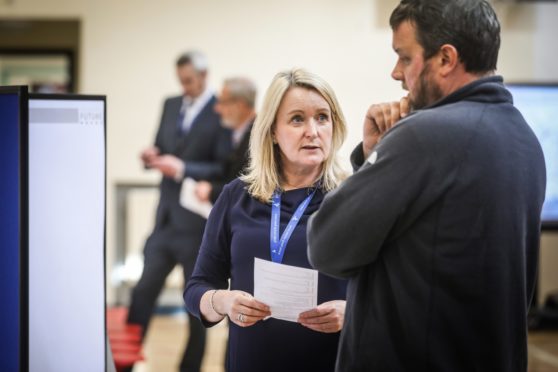Many secondary school pupils in Tayside and Fife will receive just one day of in-school learning a week before Easter holidays.
Local schools have revealed their back to school plans after First Minister Nicola Sturgeon announced all pupils would have “some” time in school from March 15.
They show most pupils will be in the classroom one day per week with home schooling to continue for the remainder of the school term.
All pupils will return to school full time after the spring holiday on April 12 in Fife and April 19 in Angus, Dundee and Perth and Kinross.
In its back to school plan, Morgan Academy in Dundee has said it will prioritise senior phase pupils undertaking qualifications.
The school day will be run in two sessions, one before lunch. Senior pupils taking specific courses could attend school at least once per day.
The rest of the school, S1-S3, can expect to be in school one morning per week, according to a letter sent to parents.
“Within S1-3, with the exception of one morning per week attendance at school, learners will be expected to continue with their remote learning at home.”
Johnny Lothian, Morgan Academy head teacher.
Head teacher Johnny Lothian told parents remote learning may have to take a back seat to facilitate the return to face-to-face teaching.
He said: “The delivery of this phased return will almost certainly have an impact on our ability to sustain the delivery of remote learning at its current level.
“Within the senior phase (S4-6), as face-to-face learning returns, parents can expect fewer demands on learners to learn remotely, although an element of this approach will remain.
“Within S1-3, with the exception of one morning per week attendance at school, learners will be expected to continue with their remote learning at home.”
He continued: “With increased face-to-face teaching and limitations on numbers due to social distancing, it is inevitable that teaching staff will have less time available to support face-to-face lessons remotely.”
Parents can expect fewer live lessons and more pre-recorded inputs as well as set tasks with resources for pupils to work through, he said.
Glenrothes High School in Fife has also confirmed S1-S3 will attend for just one day each week, while S4-S6 will have two days.
Parents, carers and pupils, please see the most up to date information regarding return to school on 15th March. We will be holding assemblies and parental engagement sessions next week. We hope to share more detail at these events. More info will follow via group call. pic.twitter.com/EMVyJzklc2
— Glenrothes High School (@GlenrothesHS) March 5, 2021
Pupils at Perth Academy have also been allocated a single day in school each week.
The Perthshire school has said the three week period will be an opportunity for young people to reconnect with each other and with the school.
Secondary school pupils in Angus are also guaranteed at least one day in school.
Kelly McIntosh, director of education and lifelong learning at Angus Council, said: “Our head teachers are working to put plans and timetables in place.
“We must work with the latest safety guidance of two metre physical distancing in school and one metre physical distancing on school transport.
“Due to the capacity of the school building, the number of children on the school roll, the number of staff available and the capacity on school transport each school may have a different timetable of attendance.
“From March 15, whilst we will continue to advise young people on how to continue with their learning from home it is important to say that our remote learning offer will be different.
“Almost all of our staff will be in school delivering face-to-face learning.”
Safety measures
Guidelines set by the Scottish Government require secondary schools to implement two metre physical distancing which means capacity must be limited.
Young people and their teachers are also required to wear face coverings throughout the school building, including classrooms.
A one metre physical distancing rule has also been introduced on school transport.
Many schools will be able to set rules based on their school capacity and building layouts which may result in some schools offering more in-class provision than others.












